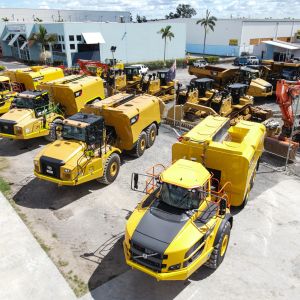
From 1st of July 2019, the Federal Government will be making all their supplier payments in 20 days, down from the current 30 days. They are also working to get all State Governments to do the same, with NSW committed already. But the biggest change will come from the big step of forcing large corporations to also pay within 20 days, or they will lose their ability to tender for Government contracts.
Impacting on about 3,000 large enterprises with turnover of $100 million or more, they will be required to report and publish payment information on how they engage with small business. At stake is $550 Billion annually in large contracts, plus a new commitment for 35% of all contracts up to $20 million in value to be delivered by small and medium businesses, up from the current commitment of 10%.
With many large companies currently taking 90 days or longer to make payments, it’ll be interesting to see how many of these large corporations are managed well enough to adapt. Based on that interest rates have been at record lows for several years, the payment delays are hardly the product of needing to keep the money in the bank to earn interest. The changes to payment requirements is likely to highlight poor cashflow management issues to the market, but also put a blowtorch on underperforming purchasing and accounts processes. Examples of unacceptable corporate standards include a contractor friend who submits their monthly invoices as a large pile of paper to the larger company on the next rung of the matrix, only to have them pick a substantial portion of the invoices at random and hand them back to the contractor with “we’re disputing these invoices, prove you’ve done the work”. That then triggers a further 30 day delay on ALL the invoices before they even get to the start of the payment clock. Similar practices are not an uncommon practice.
Time for all businesses to get on the front foot and address these types of issues now. Especially for large businesses, 7 months to tidy up processes that have been left unmanaged for many years is not a long time.

Over Size Over Mass (OSOM) Transport Review
The first report into OSOM Transport issues has now been completed. Please refer to our May Newsletter (click here) for some background. RDW was one of only 16 submissions nationally, but we felt it was important to stand up for our business as well as our customers, as these issues affect a significant portion of us, as Machinery transport often falls under this banner.
In 2015-2016, total transport activity in Australia accounted for $122.3 billion (or 7.3% of total GDP). The construction industry accounted for $18.7 billion of that, with agriculture and forestry a further $9.8 billion and mining $9.2 billion. Whilst not all of this transport is OSOM, our combined industries spent a total of $37.7 billion on transport that year. Sales and activity (and by implication transport) have increased since then. Finding efficiency and cost saving opportunities benefits everyone.
We are pleased to see that the report found 38 recommendations to improve the transport framework for OSOM, some of them taking on board RDW’s feedback. These include:
- Pilot driver requirement and vehicle rule harmonisation across departments and States
- Setting an average 48 hour turnaround time for applications (last year 4.5 million days were lost waiting for approvals!)
- Streamlining over 400 Asset Management systems (read 400 different approval entities across the country).
- Permits allowing for multiple movements and configurations on the same application and having an automatic approval for the empty return trip without new assessment. This should reduce permit volumes by 30% by 2020.
The above ideas are logical improvements to the current system, so I encourage you to back the initiative by making your opinion heard. There is now opportunity for further input, so please click here to access the full report, and email any submissions you would like to make to: OSOMreview@infrastructure.gov.au
Unique Australian Standards – a step in the wrong direction
It’s pleasing to see some pushback against unique Australian specific requirements when they provide limited or no benefit but add substantial cost. The Earthmoving industry is slowly waking up to this, and there is momentum growing in the transport industry as well. Did you know for instance that as a result of unique Australian design requirements, according to Natroads heavy vehicles are more expensive in Australia than anywhere else in the world? For example, heavy vehicles must be 50-100mm less in width than vehicles in other major markets, which costs manufacturers $15-30 million per year in redesign costs, as well as delaying the introduction of newer, cleaner and safer models into the Australian market. Natroads also highlights that the cost of stamp duty which comprises another 3% of the vehicles value impedes vehicle updates and adds to the total cost of ownership.
The Construction & Mining Equipment Industry Group (CMEIG) is finally starting to find a voice, with good work coming from the Engineering Working Group. Current proposals where they are representing a user-practical perspective includes questioning why Australia is looking to change the bottom step height standard for all access systems (including machine step ladders) from 450mm as is currently the case in Australia and everywhere else in the world, to a unique 400mm. Apart from requiring expensive modifications before sale in Australia, there are good reasons why these systems need to be a certain height. I’m sure all our readers can sympathise with the implications of lowering the closest point to the ground in terms of potential damage to the machine, and what it does to for instance approach angles.
The above is but one example of “little” areas that add up to a significant overall cost to machinery. It’s important that the message gets rammed back to Government that there is no reason to deviate from international standards such as ISO. These are just further avoidable, unnecessary costs that explain exactly why Australian businesses continue to become less competitive and why we are the most expensive country in the world to do business.
As always, onwards and upwards!
Fred Carlsson
General Manager



